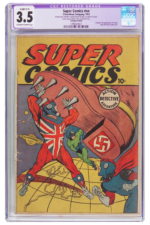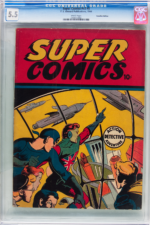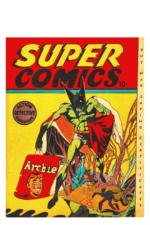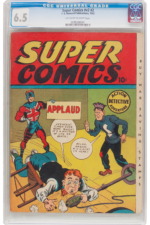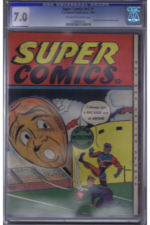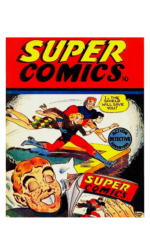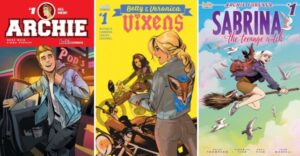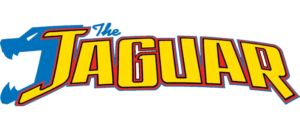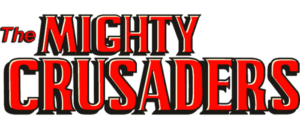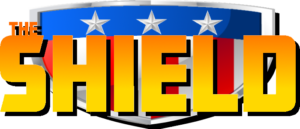STEPHEN LIPSON TALKS ABOUT THE CANADIAN WHITES
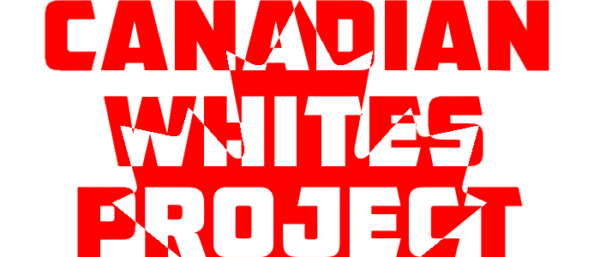
 Stephen Lipson has been in love with “Canadian White” comics, the lost treasures of Canadian heritage and pop culture longer than most. He has amassed what has been acknowledged as the largest collection of “Canadian Whites”, comprising over 450 books. Stephen is a founding member of the CANADIAN WHITE PROJECT.
Stephen Lipson has been in love with “Canadian White” comics, the lost treasures of Canadian heritage and pop culture longer than most. He has amassed what has been acknowledged as the largest collection of “Canadian Whites”, comprising over 450 books. Stephen is a founding member of the CANADIAN WHITE PROJECT.
First Comics News: What are Canadian Whites?
Stephen Lipson: Comics published with Black & White interiors between 1940-1946 in Canada.
1st: When did Canadian Whites go from being reprints to collectibles in their own right?
Stephen: In 2004
1st: What happened in 2004 to make Canadian Whites collectible?
Stephen: Certain collectors were going crazy outbidding each other on eBay. These players had deep pockets and 2004 marked the first time the books were really being sought after in the public collecting arena
1st: What is the Canadian Whites Project?
Stephen: An initiative to bring the lost record of the Canadian Golden Age to the fore.
1st: How are you involved with the Canadian Whites Project?
Stephen: My collection has been extensively indexed for this express purpose
1st: How far along is the Canadian White Project?
Stephen: We launched our website, www.canadasowncomics.com in the summer of 2014. Additionally, articles and blog entries by Ivan Kocmarek have been posted regularly on the Comic Book Daily site, and the 2013 Overstreet Price Guide also included a Canadian Whites Article by Ivan, plus two separate Canadian Whites market reports by two new Overstreet Advisors: myself and Ivan.
1st: Why did Canada want to keep American Comics out of Canada during the war years?
Stephen: To conserve the dollar
1st: Were the comics supposed to be produced entirely by Canadians or was reprinting American Comics acceptable according to the law?
Stephen: Anglo-American bought the rights to the Fawcett scripts, as did F.E. Howard with MLJ respectively.
1st: Were any publishers reprinting DC and Timely comics?
Stephen: Bell Features did reprint some Namora stories from Timely with weird hybrid titles like Comic Toons and Sensational Adventures. These comics had hybrid interiors which were not necessarily the same. Fox titles like Phantom Lady and Junior were also repackaged by Bell Features.
1st: The first issue of Super Comics was published by Citren News Company, but all subsequent issues were published by FEH. How did the comic move from one publisher to another?
Stephen: Citren News was in Montreal and FEH in Toronto. It is not known why the publisher changed.
1st: MLJ Comics were reprinted by FEH Comics. Why did they redraw the covers?
Stephen: Probably to incorporate the Union Jack in lieu of the US flag, amongst other reasons which I cannot substantiate
1st: On the covers, the Shield’s costume changes from Stars and Stripes to the Union Jack. Why?
Stephen: Because Canada was still a quasi-Commonwealth during the 1940’s and the Canadian flag pledged allegiance to the Union Jack accordingly.
1st: On the interiors, they just reprinted the original without changing the uniforms. Why the inconsistencies?
Stephen: Sometimes they did change the uniforms. I really cannot speak to the inconsistencies.
1st: Were the readers aware that many of the comics they were reading were American reprints?
Stephen: I would imagine they did when Anglo-American Publishing in Toronto was printing such titles as Whiz, Spy-Smasher, and Captain Marvel Adventures and Fawcett Publishing in the US were publishing the same titles contemporaneously.
1st: What happened to the Canadian comic market after the war?
Stephen: Once American comic books could be imported to Canada again, The Canadian Whites could no longer compete, hence they floundered.

